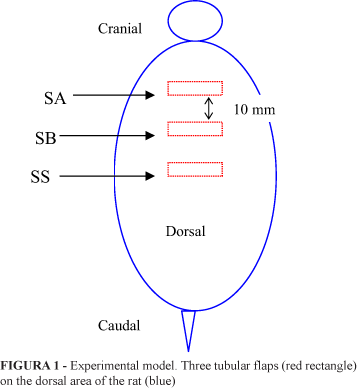PURPOSE: Microscopically evaluate the intensity of fibrosis in tubularized skin flaps on the back of Wistar rats, using silicon molds with different degrees of flexibility. METHODS: Twenty rats were submitted to three tubularized skin flaps on their backs. In two tubular flaps, we placed, as a mold, silicon catheters with different degrees of flexibility and removed them on the seventh day after the surgery. They were divided into two groups and euthanized, on the seventh and twenty-first days respectively after the surgery for the collection of the pieces, coloration with Masson tricromic, quantification of the area of each sample and comparison among the groups. RESULTS: Fibrosis was less intense on the tubular flaps where a catheter was not used as a mold. No significant difference was verified among the pieces with the silicon catheters, but there was a tendency of less fibrosis on the tubules with the most flexible catheter. CONCLUSION: There was no significant difference among the two catheter types. Fibrosis was less intense in the flaps where the mold was not used.
Hypospadias; Surgical Flaps; Silicon; Fibrosis; Rats





